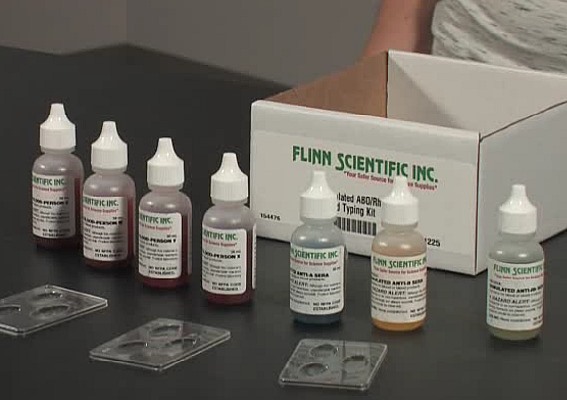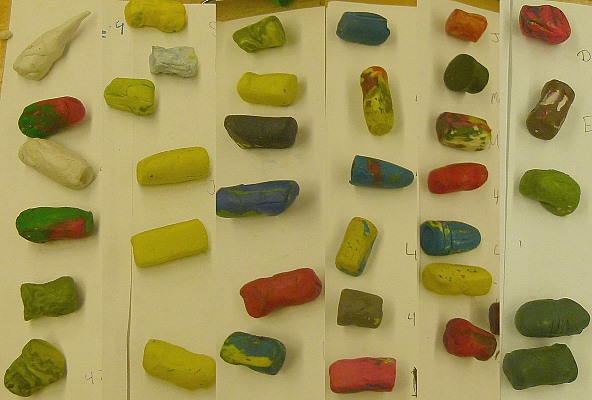Pikeville Science and Math
Camp 2015
This is where the campers came to have fun and learn all week.
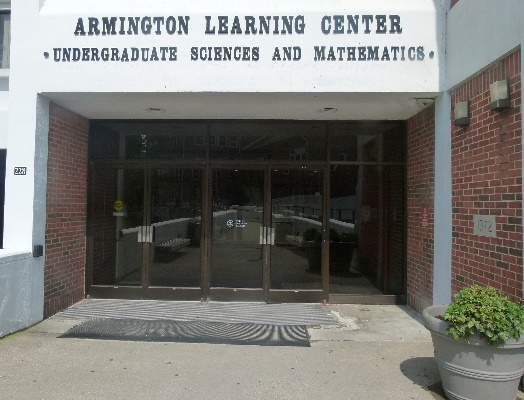
As
campers sign in
Monday morning they met some of the instructors and helpers.
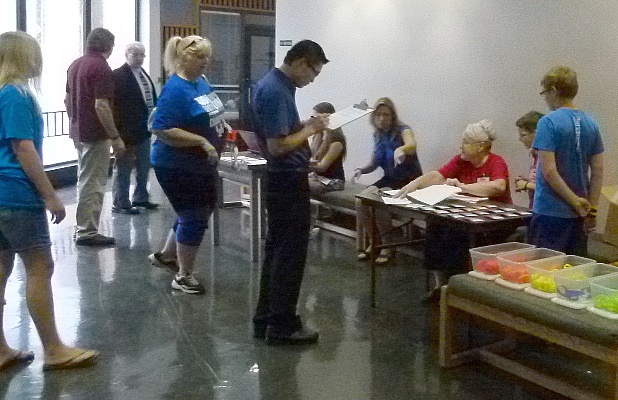
Then they assemble to hear about the activities they will be doing.
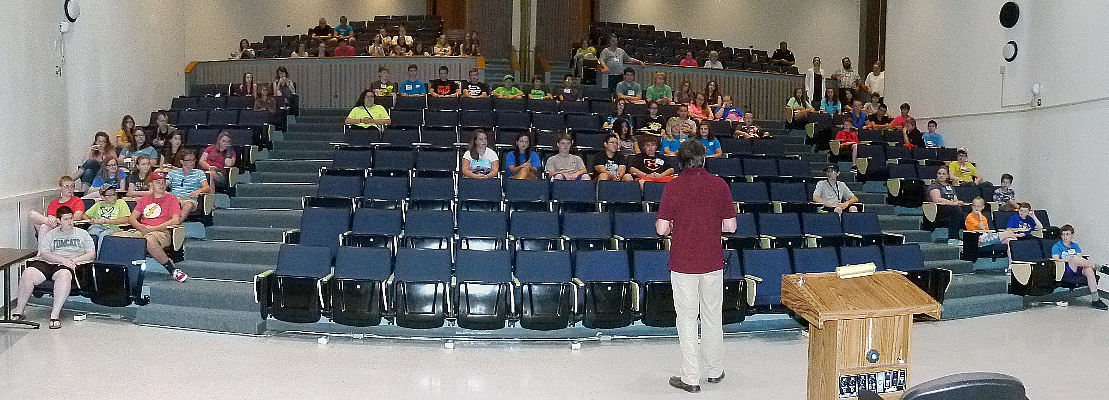
Campers
They were all anxious to begin.
Here are the groups that worked together in their classes this week.
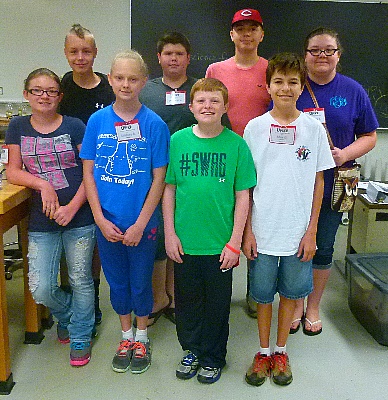


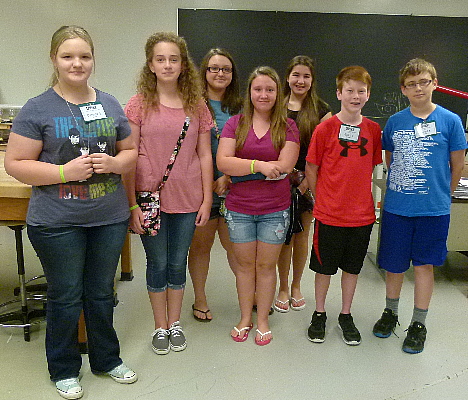
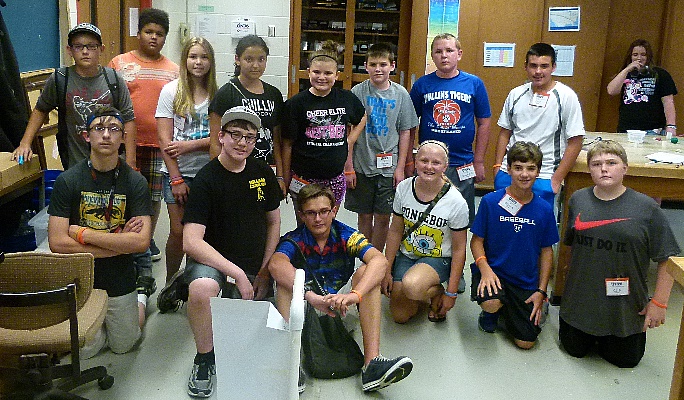
And some posing with Dr. Arts the camp director.
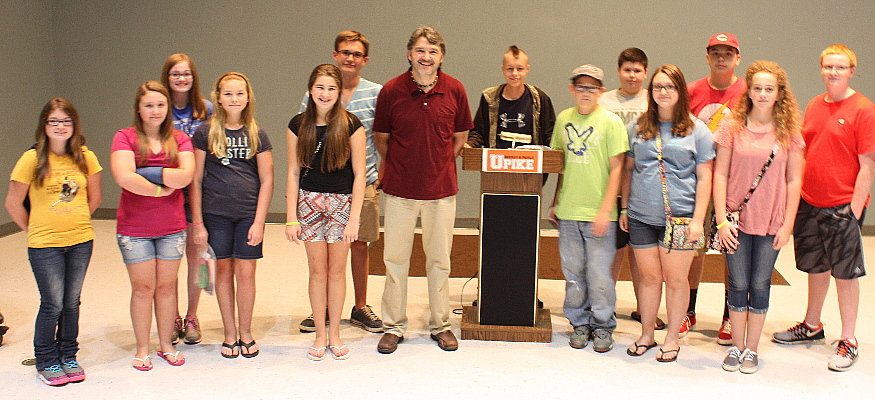
Astronomy
Biology
Chemistry
Computers
Ciphers
The ability to hide your communications could be useful if you were a bad guy planning some crime with a co-conspirator.
The ability to decipher those communications would be a useful tool if you were a good guy trying to outwit the criminals.
To do that you need to be aware of the encryption schemes that may be used.
Campers spent three days learning three different techniques.
Caesar cipher
This was the first that they studied.
It is named for Julius Caesar who used it to protect messages of military significance.
To use it you just shift each letter in the message forward in the alphabet.
If that takes you past "Z" you wrap around to the beginning of the alphabet.
It was system my Buck Rodgers secret decoder ring used.
The first picture shows one set to an advance of three letters, which is the same as Caesar used.

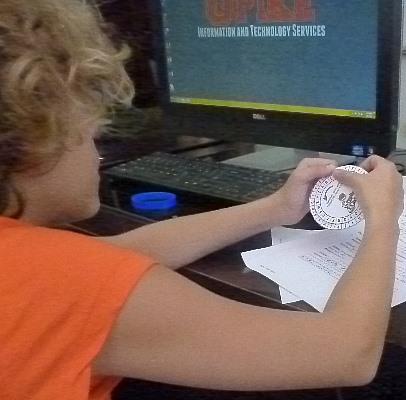
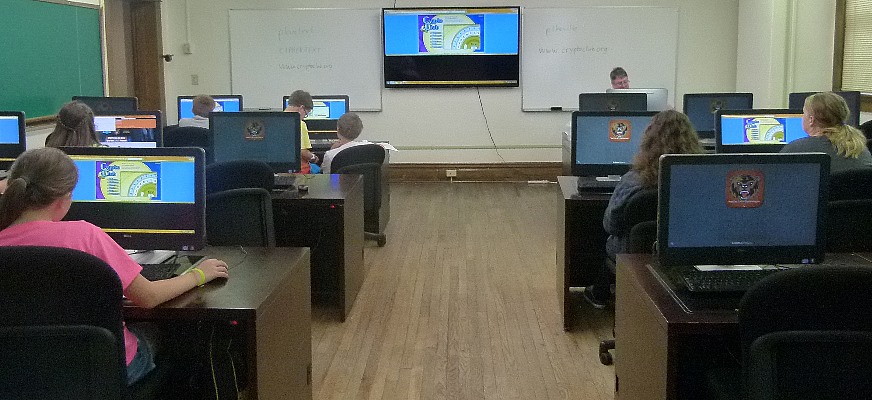


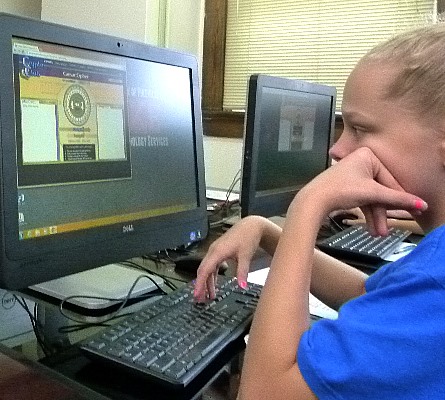

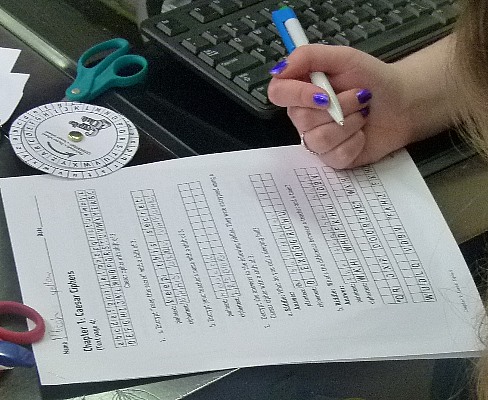
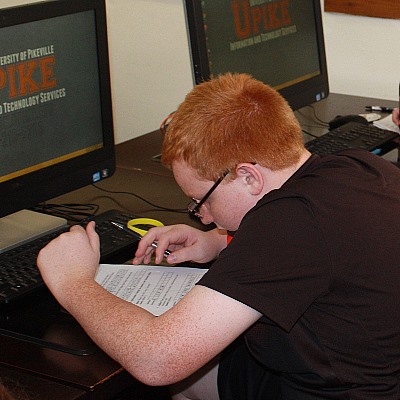
Keyword cipher
Vigenere Cypher
This cypher is a combination of the previous two.
To use it you again choose a keyword,
except this time it is used to select the alphabet that corresponds
with "A" in a Caesar cypher.
The first letter of the keyword selects the Caesar cypher to be used for the first letter of the message.
The second letter of the keyword selects the Caesar cypher for the second letter of the message and so on.
When you reach the end of the keyword you just repeat it and continue.


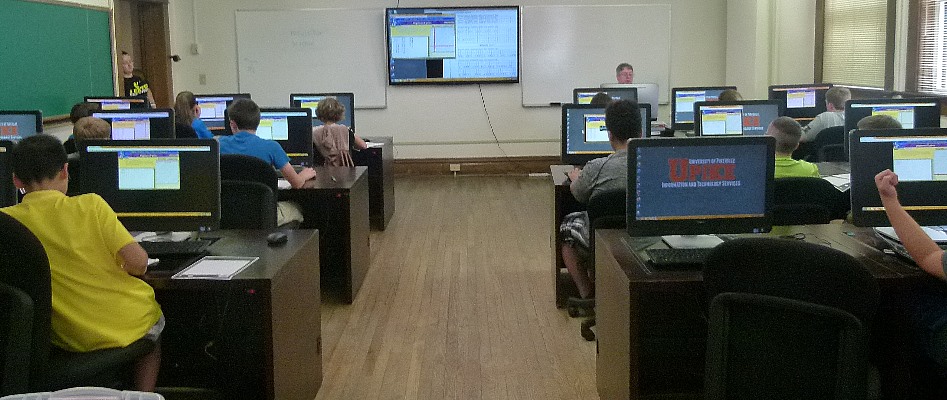

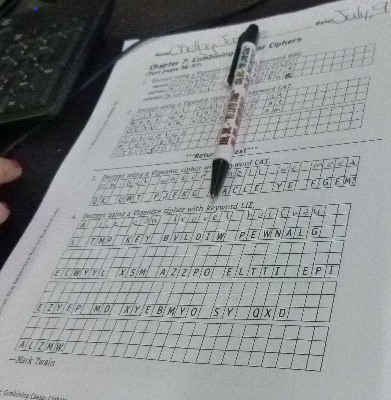
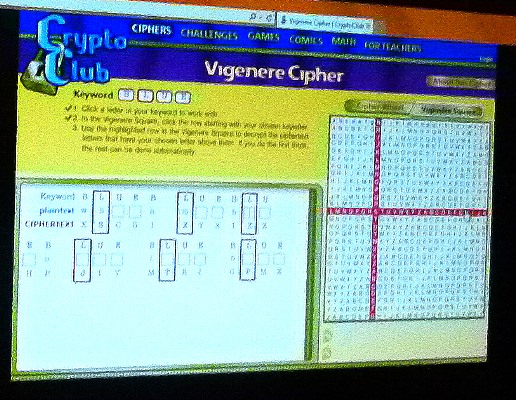

Physics
Cryogenics
It is the study of very low temperatures.
We used liquid nitrogen and took a look at it and how it affects a variety of things.
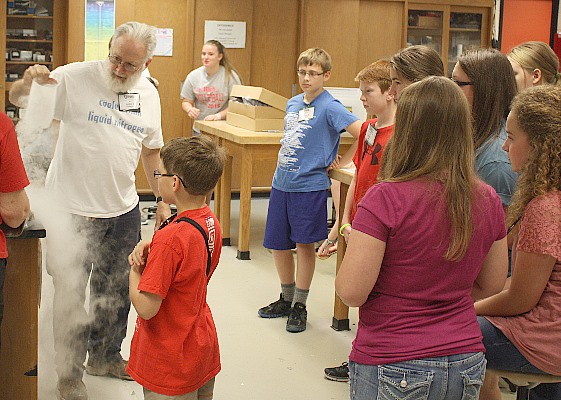
We put a balloon over the neck of a small bottle that had a little liquid nitrogen in it.
As it warmed up it boiled and the gas filled the balloon.
I went on with other demonstrations and most of the kids forgot about it.
As I hoped they were startled when the balloon burst.
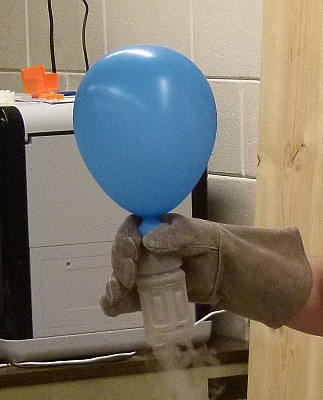

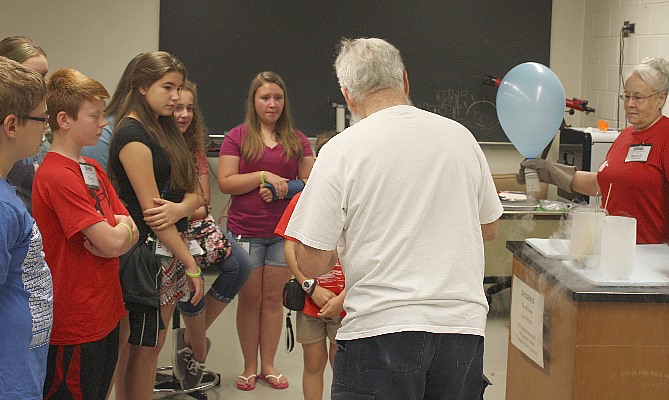
We took a look at the Leidenfrost effect.
That is the name for what happens when layer of gas lifts a drop of
liquid from a surface that is much hotter than it's boiling point.
You can see it with a drop of water on a very hot frying pan or a drop
of liquid nitrogen on the floor or just about anything else.
That is what allows the bare filament of a light bulb to heat up and glow even when it is in this very cold liquid.
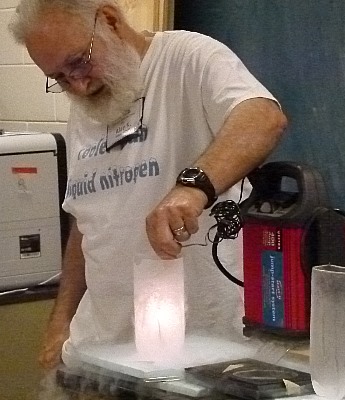
Some materials become superconductive when they are sufficiently cooled.
When they are a magnet that is brought close to them induces an electric current that makes a magnetic field.
The field is opposite to the magnet's field and precisely directed to repel it so it is levitated.

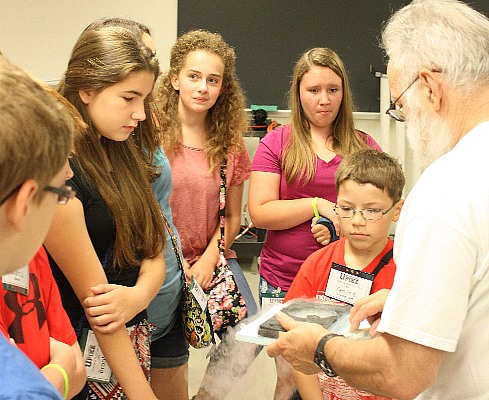
I told the campers that I had been an astro-not and had traveled to Neptune where I found these strange animals.
I only had a limited space on my ship to bring them back for the scientists to study.
By cooling them I made all the
balloon animals I am holding and more fit.
When I got back to earth I let them warm up and they all returned to their original size.
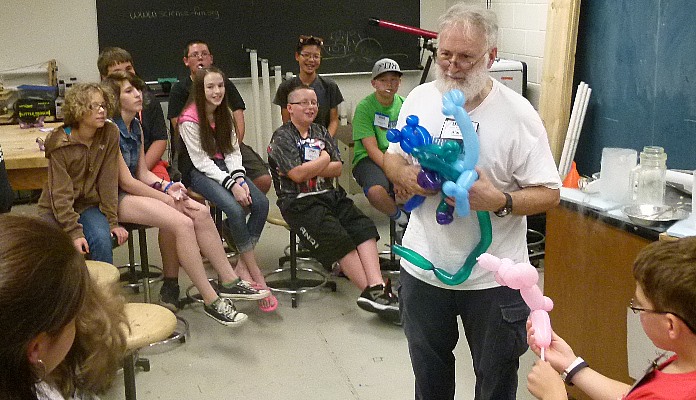
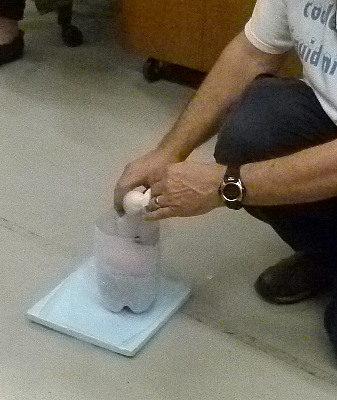
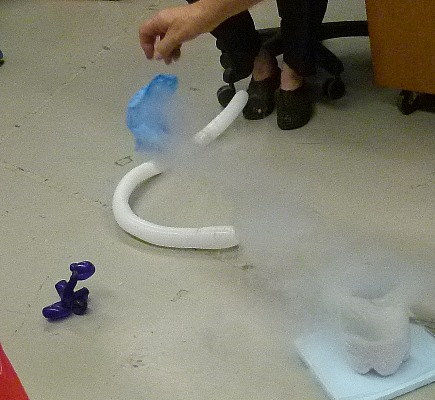
Almost everyone was amused by my jokes.
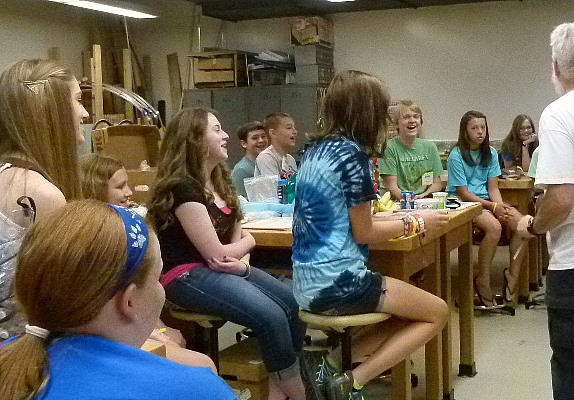
We went outside where I put a small amount of liquid nitrogen into a two liter bottle.
I then did something that you should never do --- I put the lid on it.
I quickly set it in a can and put a 5 gallon bucket over it.
The campers watched and recorded what happened next.
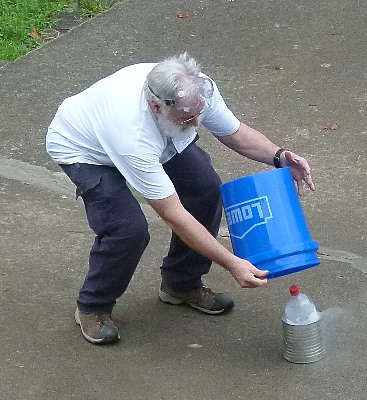
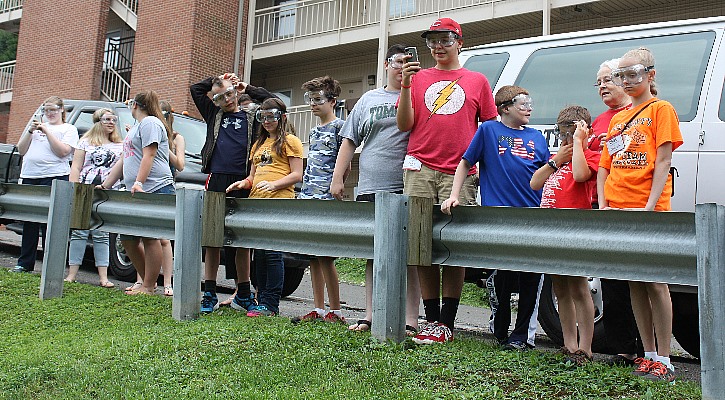
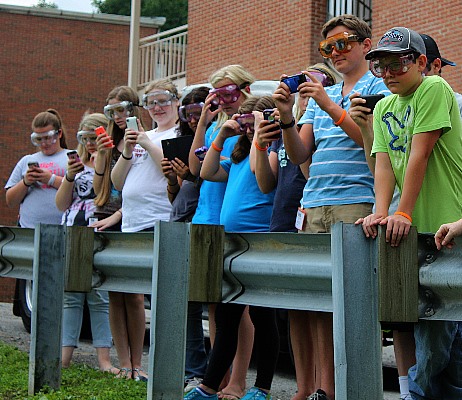
When the pressure builds to the point that the bottle bursts the bucket is thrown more than 30 feet into the air.
I don't know if these pictures were taken at the highest point in the
flight but high enough to give you some idea of the energy released.
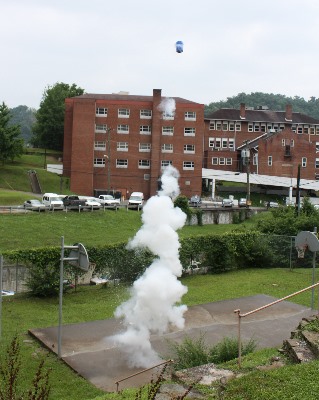

Then we came inside and made delicious ice cream in 20 seconds or less.
Easy if you have liquid nitrogen to cool it down.
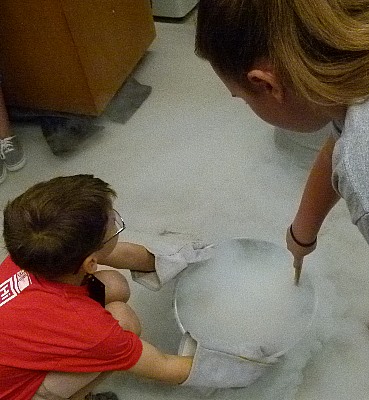
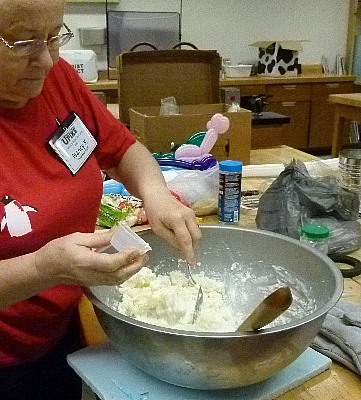
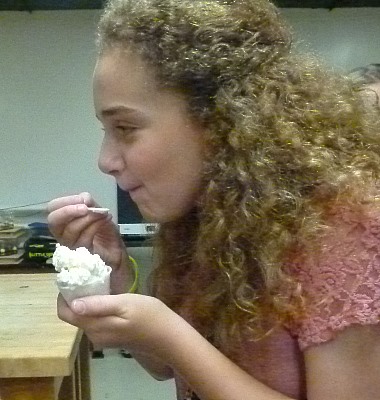
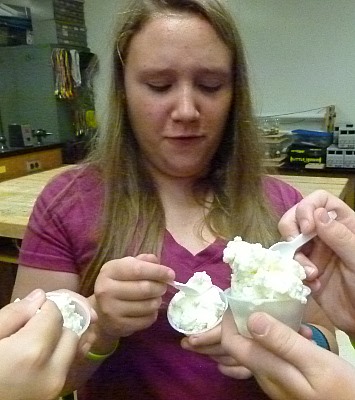 For more of what liquid nitrogen can be used for go to this page.
For more of what liquid nitrogen can be used for go to this page.
Ballistics
Stopping Distance
The speed a vehicle was going can be determined from the distance it takes to stop.
That may be important if criminal charges may be filed as the result of an accident.
We measured the speed (measured with a radar gun), free roll distance, and the stopping distance for some little cars.
They were built so that a marker could be triggered to drag on the paper simulating locking the wheels in a skid.
The cars were tested with differing amounts of cargo that approximately doubled their weight to see what effect that had.
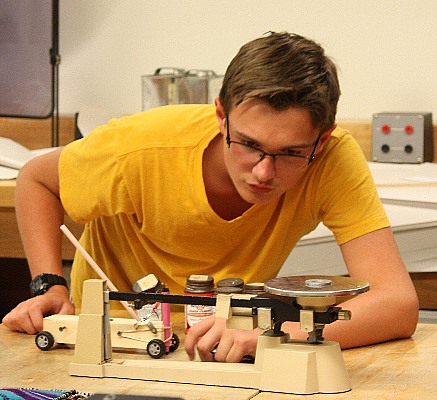
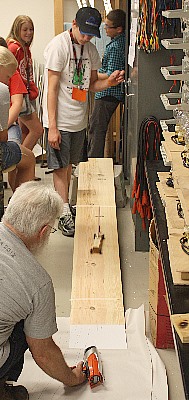
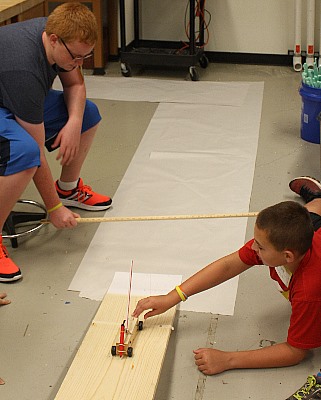
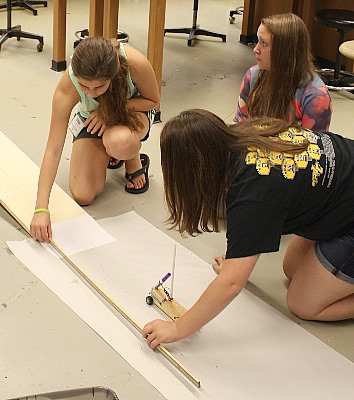

Tracking
Nancy explained what we have were taught in classes about tracking and what we have learned on real lost person searches.
The campers then walked on a pad that had a little bit of food coloring on it and then on to paper.
We compared the prints left by apparently identical flip flops and the kids picked up differences due to wear and damage.
Step length and the angle the tracks make with the direction of travel provided other ways to differentiate between prints.
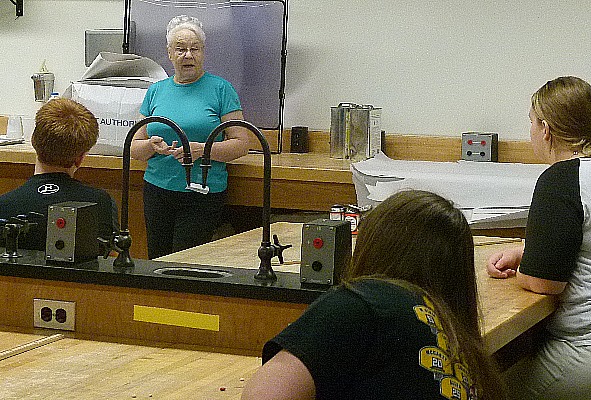
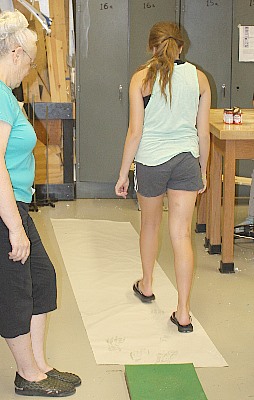
Explosions
Lunch
Always great meals with something for every taste.
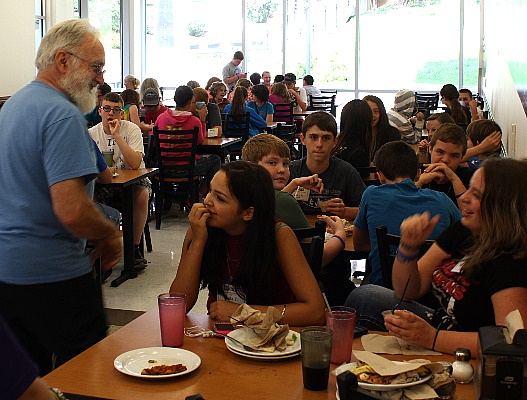
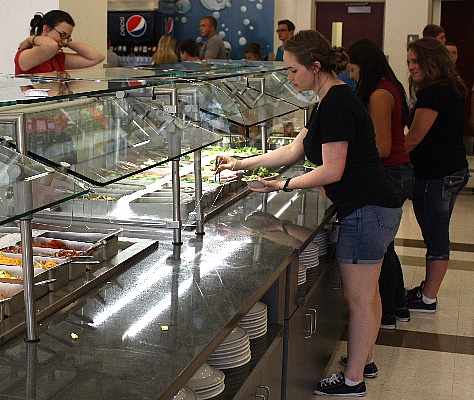
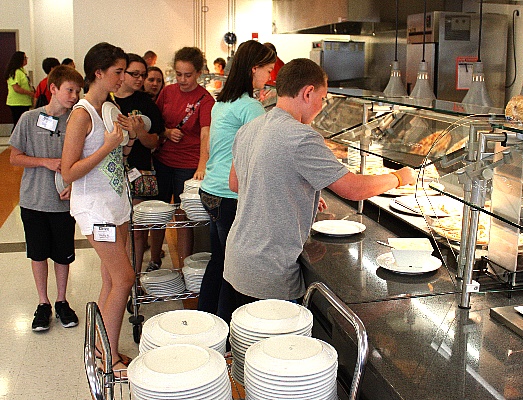
Pikeville construction
A building is being added to the campus so a part of the hillside has to be cut away.
We could look down on the site on the way to and from lunch.
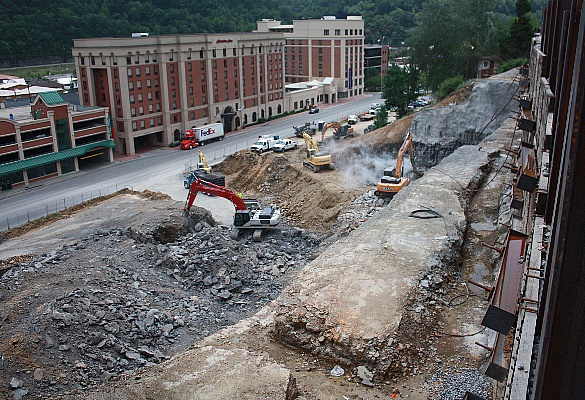
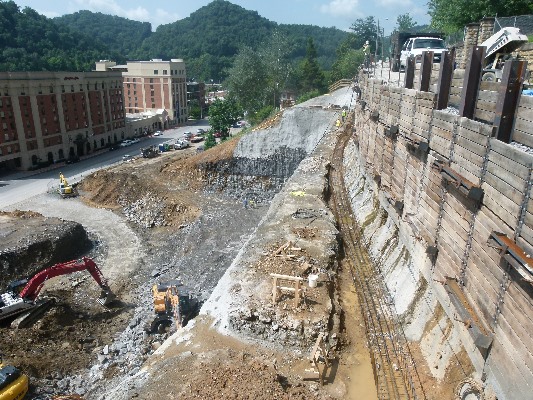
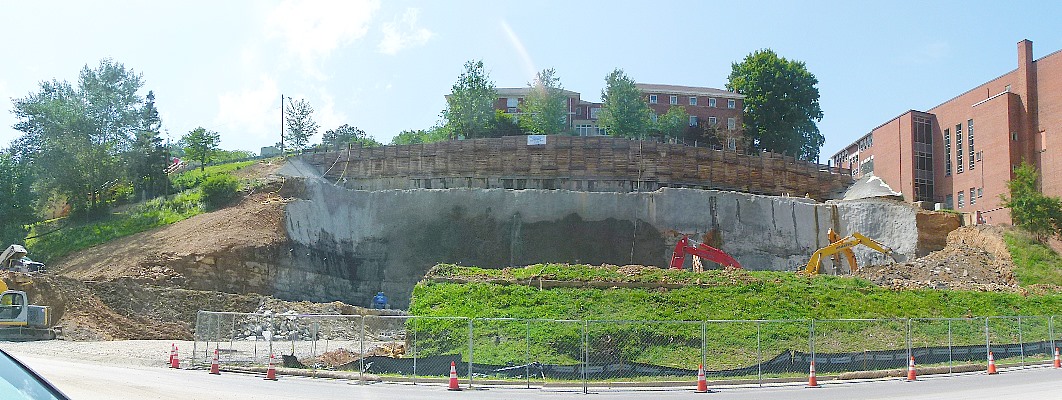
Helpers
Each class had some great helpers to assist the instructor.
They had all been at camp before and wanted to come back for more fun.
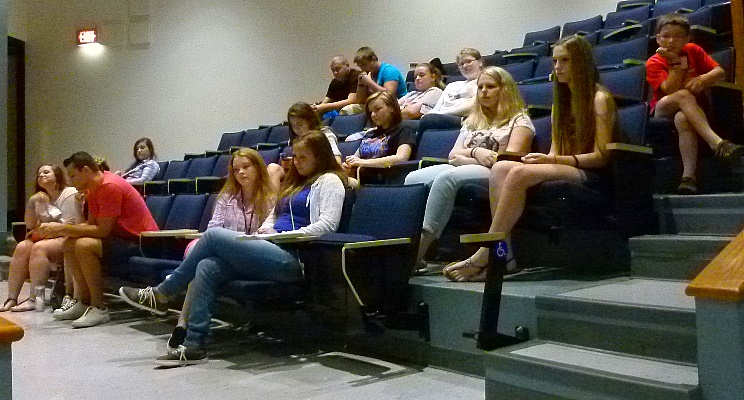

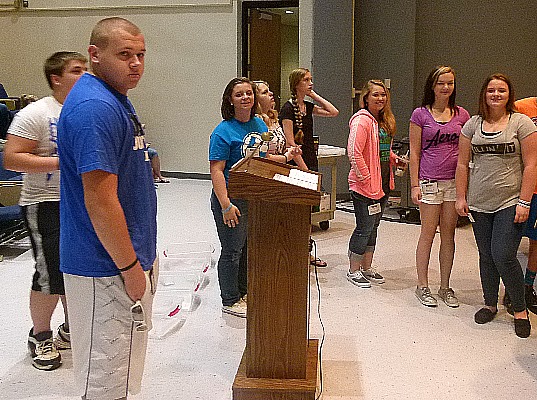
Contests
The Winners
Go to our Science Fun
page
Go to our Travels page
Go to our Personal home
page
Go to our Community page
E-mail Nancy and Alan

The
www.mrtc.com/anvk/ web site by Alan
Kuehner is licensed under a Creative
Commons License.
Additional information and permissions beyond the scope of this license are available here.

